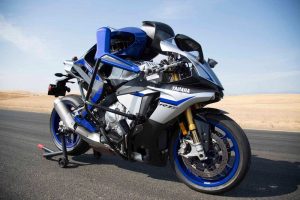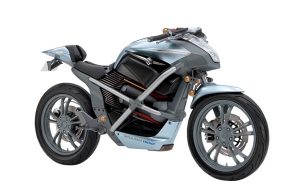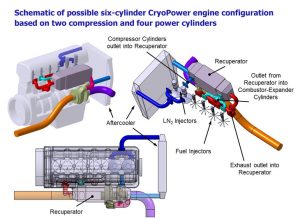2 stroke/4 stroke motorcycles ‘Vs’ EM’s (Electric motorcycles) & EV’s.
2 stroke/4 stroke motorcycles ‘Vs’ EM’s (Electric motorcycles) & EV’s. Where does the internal combustion engine fathom in the global emissions battle & how can we embrace liquid fuels for a zero emissions future?

2 stroke/4 stroke motorcycles ‘Vs’ EM’s (Electric motorcycles) & EV’s. Where does the internal combustion engine fathom in the global emissions battle & how can we embrace liquid fuels for a zero emissions future?
Written by Katy Mason 22.10.18
EV’s, EM’s, electrification, battery power, lithium, charging ports. These buzz words light up the media & social media feeds like the proverbial fire cracker. But what on earth does it all mean? When did our language become so littered with references to the latest innovations in transportation & what is all the hype about?
The IPCC report shook the world at the beginning of October with it’s stark vision of a world beyond 2.0oC & set in motion the global knee jerk reactions over climate control. The UK government suddenly wants to ban all diesel & petrol vehicles form the British roads by 2032, as opposed to 2040. Certain boroughs in London have already set up ‘Zero emission’ zones & diesel cars & trucks in particular are banned from these areas & can incur hefty fines if they break these protocols.

The IPCC report shook the world at the beginning of October with it’s stark vision of a world beyond 2.0oC & set in motion the global knee jerk reactions over climate control.
We are all aware that the transport sector is responsible for at least 65% of the global emissions from carbon dioxide fossil fuel, which are & have been damaging our global climate. However, policy makers & media hounds alike are seemingly fixated with the devastating power of liquid fuels, instead of looking beyond the fuel you can currently purchase at the fuel pumps & simply calling for all liquid fuels to be banned.
However, research has proven that as a planet we are going to have to rely on using liquid fuels, in all of their diverse forms, for many years to come, as we simply do not have the infrastructure to remarkably turn every vehicle on the roads into an EV overnight.
It is with this in mind, that I began to consider how all of these rulings will affect the ‘sport’ which has driven me, literally since I was a toddler. Formula 1, MOTOGP, BSB, Side Car Racing, The Isle of Man TT. These events are etched in my very soul & as a very passionate petrol head, I am hooked on anything which has four wheels or two wheels and goes fast. No…super fast!

Formula 1, MOTOGP, BSB, Side Car Racing, The Isle of Man TT. These events are etched in my very soul & as a very passionate petrol head, I am hooked on anything which has four wheels or two wheels and goes fast. No…super fast!
I understand how these vehicles achieve this excessive yet controlled speed & it is the fuel which feeds them which changes their performance. I am mindful as an adult of the global affects of transportation emissions, as I am with the emissions from the sports I love. But, should the fact that I understand the damage the fuels of the past have done, steer me away? How can I?! This is my passion. This is my life. How far do I have to go to prove I care about my little blue planet , without sacrificing a lifetime of fast cars & motorcycles?
During my annual visit to The Goodwood Festival of Speed this year, I witnessed some remarkable innovations in the automotive world. The ROBORACE car, an AI driven, battery powered car, able to race in Formula E. The Yamaha MOTOBOT, capable of riding a MOTOGP motorcycle, not quite as fast as Valentino Rossi! & the NIO EP9, the worlds fastest battery powered supercar.
These innovations of course are cutting edge & can tell us so much with the data they produce. However, although at the time I was intrigued by their innovations, having subsequently read extensively around the subject of emissions, transportation & the EV explosion, I have begun to wonder about the one thing missing from all of these new innovations; Human enjoyment!

The Yamaha MOTOBOT, capable of riding a MOTOGP motorcycle, not quite as fast as Valentino Rossi!
The thrill of watching motor sport at the track or on the television, is because of the adrenaline you feel. It is enjoyment, a sensation only a human being (currently) can truly revel in. The adrenaline of watching MOTOGP motorcycle riders take corners at a 45 degree angles, at speeds in excess of 90mph, is breath taking & it is this rush that a true petrol head thrives on. Equally so, any petrol head who has had the thrill of a track day, car or motorcycles, knows how exhilarating it is to push the vehicle they are in/riding beyond the limits capable of on the roads.

The adrenaline of watching MOTOGP motorcycle riders take corners at a 45 degree angles, at speeds in excess of 90mph, is breath taking & it is this rush that a true petrol head thrives on.
With this in mind, I come back to The Goodwood Festival of Speed. Towards the end of the day I was watching some of the antics of the freestyle motocross riders in the GAS arena. These riders trust their vehicles implicitly, as they often have them over their heads, let go of them mid air & jump over other riders. What was intriguing was that at least two of the riders were riding electric motocross bikes. They sounded…odd. The other motorcycles in the display had the tell tale crack of the exhaust from their 2 or 4 stroke engines & when they revved them up at the end of a display sequence, the engines screamed! But not the EM. The EM was very…subdued & herein lies the rub.
Most petrol heads love the sound of a big engine. Whether it is the rumble of a V8 LS Mustang, the growl of a Big Block Chevrolet, the howl of a BMW S100RR, the grunt of a KTM Superduke, the chatter of a Ducati Monster or the heart thudding, pounding of a Triumph Rocket 3; a petrol heads head will automatically spin, when they hear one of those sounds. It’s an automatic reaction because this is what we love. Power. Speed. Performance.
Therefore, when we consider the EM’s & how they hold up to this expectation for a petrol head, can they hold a light to the traditional rule of three? Do they have the power? The speed? The performance?
One of the big issues consumers have with EV’s in general is what is commonly being called ‘range anxiety’ What happens if your EV runs out of energy & you are stuck in the middle of nowhere with nowhere to charge your EV?
One answer could be Hydrogen.
“And that’s where the idea of hydrogen-powered bikes comes in. In theory they provide emissions-free transport without the cripplingly-slow recharging times.
There are two ways to use hydrogen as a fuel, and both result in exhaust that’s simply water. H2O.
The simplest is to use a fairly normal internal combustion engine. Several firms have successfully converted petrol engines to work using hydrogen. Weight-for-weight, hydrogen is far more power-dense than petrol, too. You get 142 megajoules from 1kg of hydrogen, equivalent to 53 horsepower for one hour (53hp*h), compared to 46 megajoules (17hp*h) from 1kg of petrol.” (1)

And that’s where the idea of hydrogen-powered bikes comes in. In theory they provide emissions-free transport without the cripplingly-slow recharging times.
However, as this article continues to explore, Hydrogen by it’s very nature would be almost impossible to actually get into your motorcycle, without some extravagant & heavy modifications. The need for the insulation & storage of the Hydrogen, would counter act the energy efficiency, as the weight would hamper speed & performance.
The petrol head need for speed & performance can be appeased to a point at the The Isle of Man TT, which has seen a great response to the ‘Zero’ discipline, with some of the EM’s achieving speeds in excess of 117mph. However, when you are watching the motorcycles speed past, the lack of sound is very disconcerting.
MCN (Motorcycle News) have created a new category in their annual ‘Bike of the Year’ feature; the ‘Electric Bike of the Year’ category & the 2017 winner was the Energica Ego. Adam Child of MCN said “Power is sportsbike-thrilling. It does 0-60 in less than three seconds and despite weighing 280kg. Energica claims the electric motor has twice the torque of a superbike from zero revs to 4700rpm and around the same bhp as a GSX-R750” (3)

MCN (Motorcycle News) have created a new category in their annual ‘Bike of the Year’ feature; the ‘Electric Bike of the Year’ category & the 2017 winner was the Energica Ego
Another example of a touring EM, is the Zero DSR Black.
“The Zero DSR Black Forest builds on the success of its S model, but this time around they’ve built an adventurer. It comes with luggage and a 163-mile range (at city speeds) as standard, but optional upgrades like a range extending battery (£3,000) can improve this.
Serious adventure touring on the DSR would be an expensive and impractical affair at the moment, but things are moving in the right direction.” (3)

Another example of a touring EM, is the Zero DSR Black.
The DSR Black Forest Edition (DSR-BF) is not what you would call cheap. It costs £17,285 and that’s after you’ve claimed back £1500 from the government. If you want the higher-capacity charge tank, as featured on our test bike, you’ll need to pay an additional £2,300. (4)
Although there are some compelling ideas abound in the EM market, the costs, range issues & simply not sounding right; is, for a lot of petrol heads/motorcycle riders, not something they are looking to engage with. As a biker myself, I appreciate that my motorcycle’s history can be partly contributory to the global emissions crisis, but the fuel I add to the motorcycle is constantly being refined & will ultimately be a zero emission product. Furthermore, there are such giant changes in the automotive industries, specifically targeting zero emissions liquid fuel vehicles.
One such example is the Mazda Skyactive -X.
Other combustion engine pioneers have started to be recognised by media sources. The Mazda Skyactiv-X vehicle, with it’s Spark Controlled Compression Ignition (SPCCI) system engine, combining the efficiency of diesel with a petrol engine; is set to hit the consumer markets in 2019. Cummins Inc’s Executive director of product management and market innovation Tim Proctor recently stated “With our technical advancements, we see diesel remaining as the primary source of power in the commercial vehicle sector for the foreseeable future”. With this in mind, is it time to re-evaluate the combustion engine?
The Dolphin N2 team are one of the British innovators recognised as forging the way forward with Cryogenic Split Cycle diesel engine technologies.

The Dolphin N2 team are one of the British innovators recognised as forging the way forward with Cryogenic Split Cycle diesel engine technologies
As industry media suddenly begins to report on the ways that conventional ‘combustion engines’ will be being used globally for many years to come; the Dolphin N2 technology sits carefully within this ‘Cleaner diesel’ ‘Zero emission diesel’ option.
I have recently written a blog for Dolphin N2 with the subheading reading “Is it time for the combustion engine to step back out of the shadows & show the world how ‘green’ it actually is?” & with the extensive research & reading I am perpetually undertaking, I wholeheartedly believe in the future of the liquid fuel combustion engines & I hope upon hope that the policy makers & the media will begin to be more open minded about liquid fuels.
I can never foresee a time when I will actually enjoy owning a vehicle which I am anxious about running out of energy, cannot perform as I wish it to or to roar when I rev it’s engine. Car or motorcycle, I believe there is a future for a combination of fuels & energy sources which can be tapped in to, if only people would be educated enough to understand this.

I can never foresee a time when I will actually enjoy owning a vehicle which I am anxious about running out of energy, cannot perform as I wish it to or to roar when I rev it’s engine. Car or motorcycle, I believe there is a future for a combination of fuels & energy sources which can be tapped in to, if only people would be educated enough to understand this.
Written by Katy Mason 22.10.18
- https://www.bennetts.co.uk/bikesocial/news-and-views/features/bikes/hydrogen_powered_bikes_future_fuel
- https://www.motorcyclenews.com/news/first-rides-tests/energica-ego-review/
- https://www.motorcyclenews.com/news/2017/december/top-electric-motorcycle/
- https://www.bennetts.co.uk/bikesocial/reviews/bikes/zero/zero-dsr-black-forest-edition-review